Ueno Royal Museum

A solo exhibition commemorating the 100th anniversary of the birth of Kyoko Asakura (1925-2016), a representative contemporary figurative sculptor, "100 Years of Kyoko Asakura" was held at the Ueno Royal Museum Gallery from Sunday, May 11, 2025 to Wednesday, May 21, 2025. Admission is free.
Kyoko Asakura is the second daughter of sculptor Fumio Asakura, who led the Japanese sculpture world from the Meiji period through to the Showa period and is known for his outstanding naturalistic realistic expression.
She studied sculpture at the Asakura School of Sculpture, which was run by her father, and was first selected for the 5th Shinbunten Exhibition in 1942. She received several special selections at the Nitten Exhibition, and in 1952, at the young age of 26, she became the youngest and first female judge, but left the Nitten Exhibition as if to break away from the male-dominated society and various ties. From that point on, she produced many sophisticated, urbane female figures from a freer position, and established her own style. She remained active at the forefront of her field until her later years, passing away in 2016 at the age of 90.
This exhibition will introduce 12 selected pieces from the works donated to Taito Ward by her family after her death, mainly bronze works created after 1970. It was planned to promote the artist's appeal once again on the occasion of the 100th anniversary of her birth. The Ueno Royal Museum Gallery is also the venue where Asakura Kyoko held her last solo exhibition before her death.
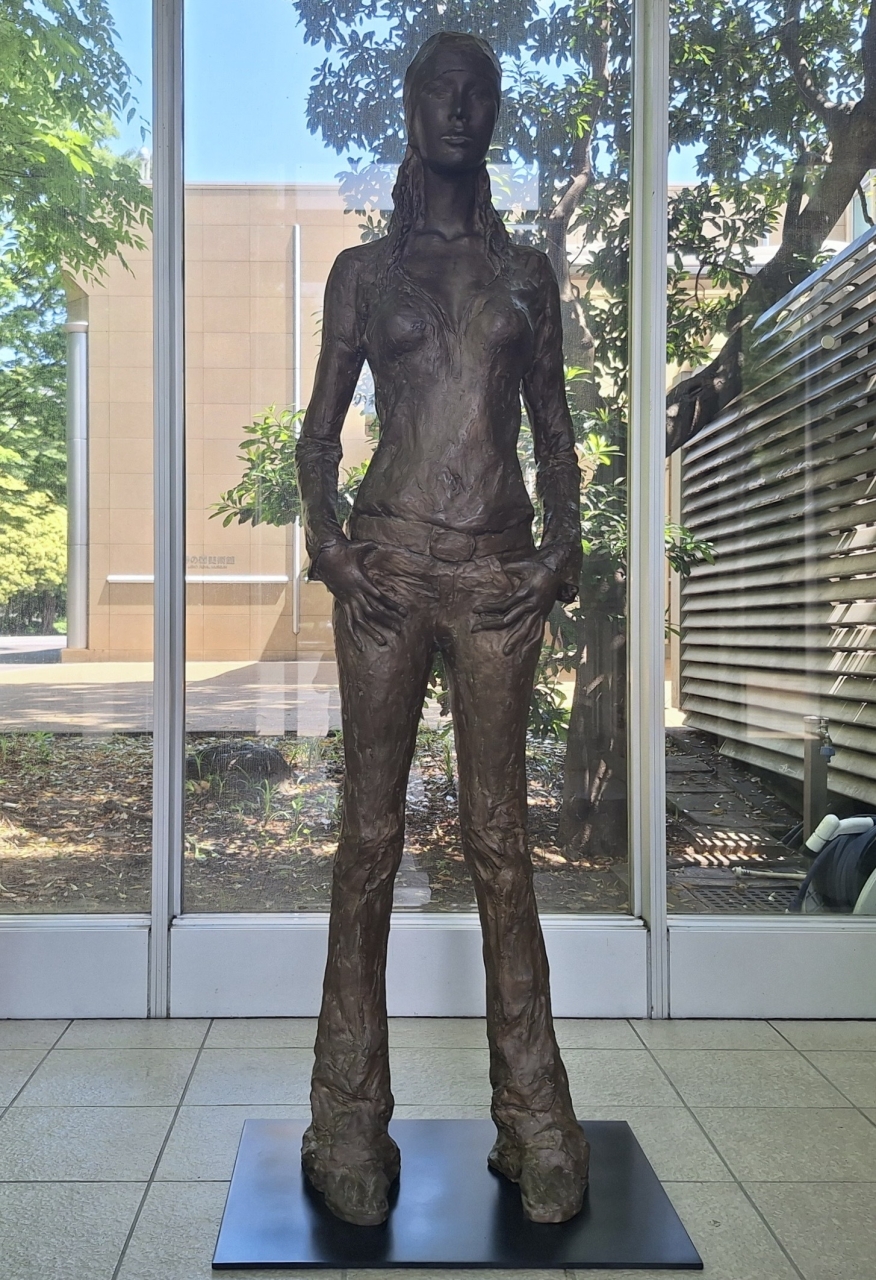

According to Yasuko Tobari, a senior researcher at the Asakura Museum of Sculpture (※), who guided us through this exhibition, Kyoko Asakura was extremely particular about the models she used for her work, and sometimes it took her several years to select one. Most of the people who suited her glasses were young foreign or mixed-race women, with small faces, long limbs, and stylish figures.
(*) This is the studio and residence that Fumio Asakura had in Yanaka, Taito Ward, where Kyoko Asakura learned the basics of sculpture from her father. It is now open to the public as a museum.
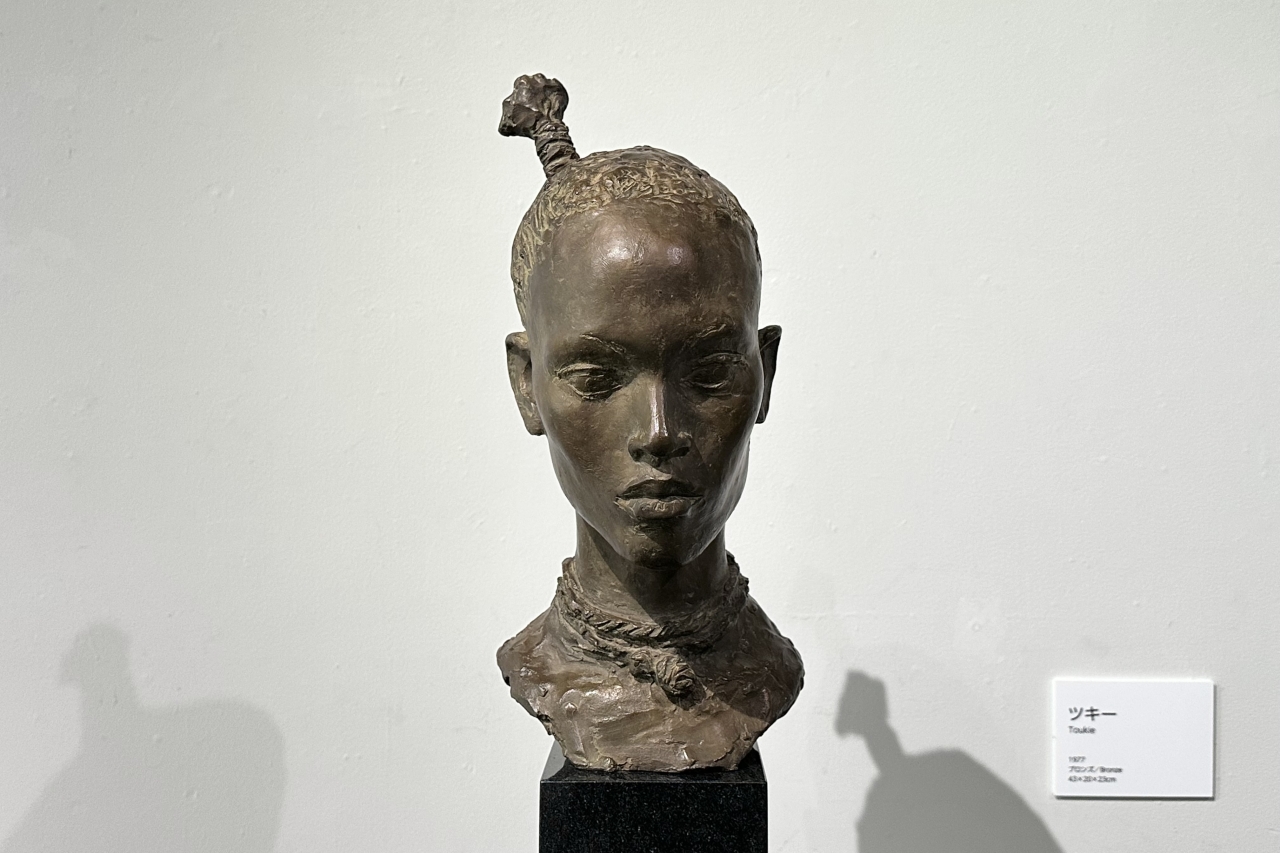
The "Tski" series, which draws the viewer in with its bold features, features three pieces on display. One full-body figure is in a strange pose, as if dancing, fully expressing the beauty of the statue's well-honed proportions. The sculptor's solid skill can be seen in the symmetrical expression of the muscles, with the taut lower body and relaxed arms, seen in the unique dynamic stance, and the sense of balance that allows the statue to stand on its tiptoes.
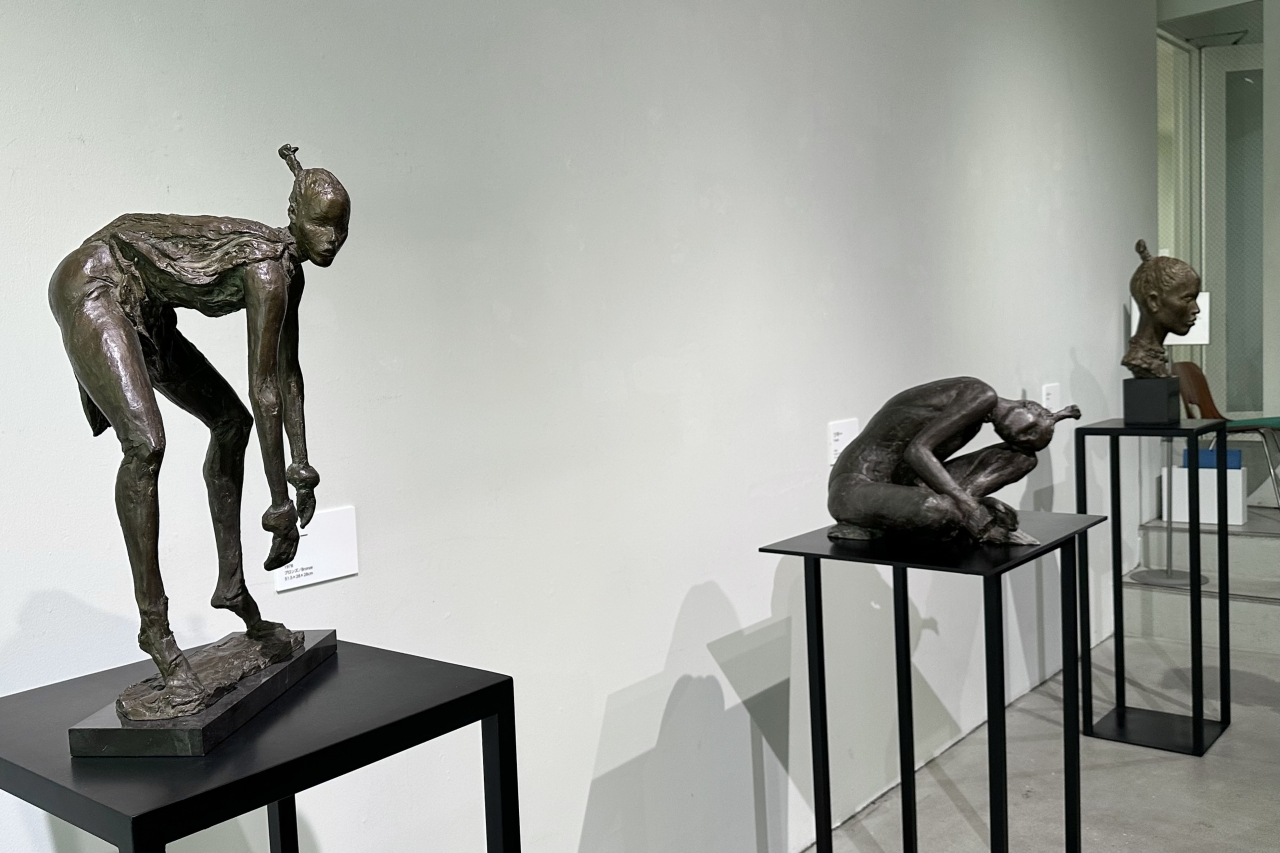
The elegant "Hat," featuring a large hat pulled down over the artist's eyes, is one of Kyoko Asakura's favorite pieces. Her facial expression cannot be seen from the front, but the beautiful expression of her hands spread open around her chest adds a charming touch to the piece, and the impression it gives changes depending on the height and angle of your gaze.
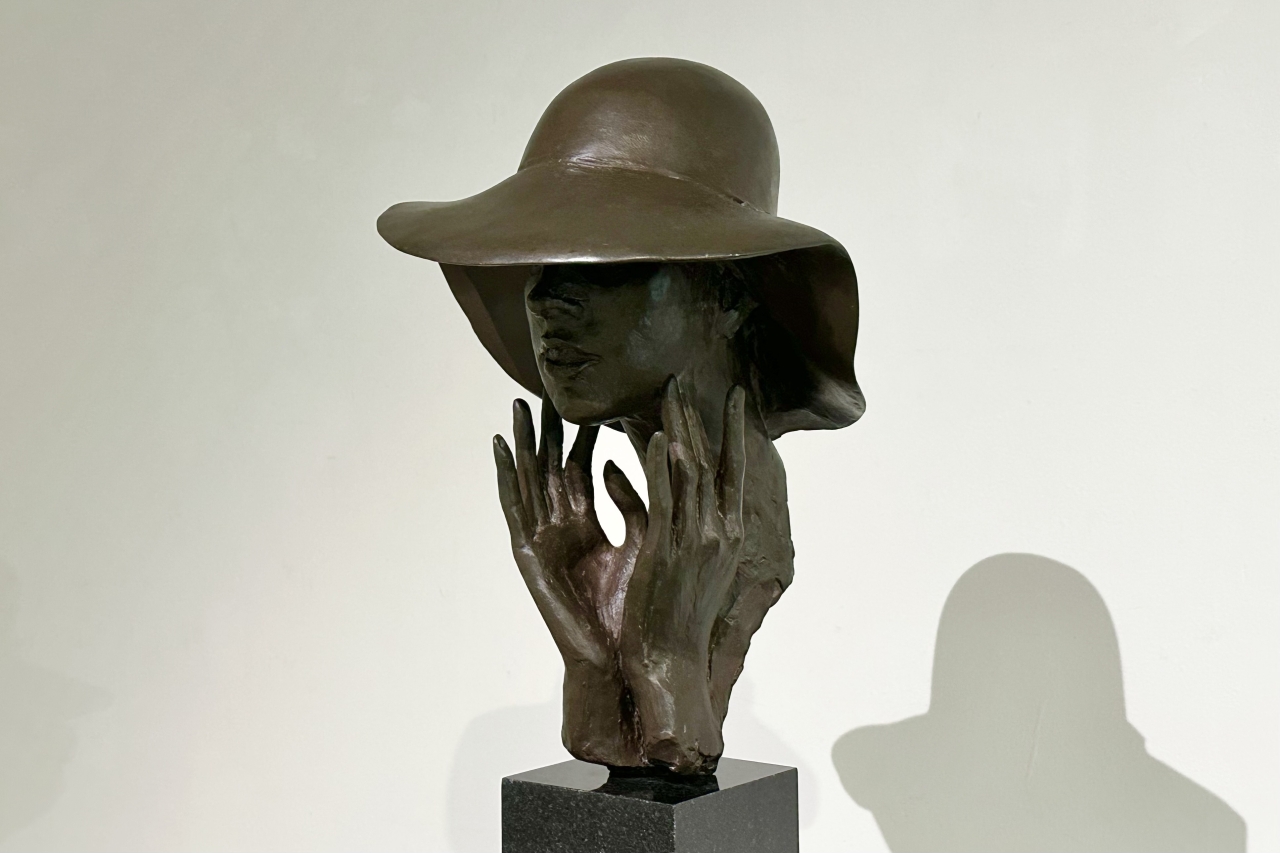
According to Tobari, it was from this production onwards that this type of hand expression became an accent in Asakura Kyoko's works.
"The sculptor Tadayoshi Sato has written, 'It's true that hands are quite attention-seeking, and if you let your guard down for even a moment, they will start chattering away and turn into vulgar sculptures.' However, in Kyoko's works, which effectively use the expression of hands as seen in Hat, it feels as though she is creating a time and space that seems to be in dialogue with us as we confront the work."

One piece that particularly caught the eye at the venue was "F" (later renamed "Rest" ), a rare male figure among Asakura Kyoko's works, modeled on singer Akira Fuse. The piece depicts a busy young singer taking a break on a terrace during his free time, and won the 7th Nagano City Outdoor Sculpture Award in 1979. The fact that part of the foot protrudes from the black base is the sculptor's intention to show an image of a relaxed mind.
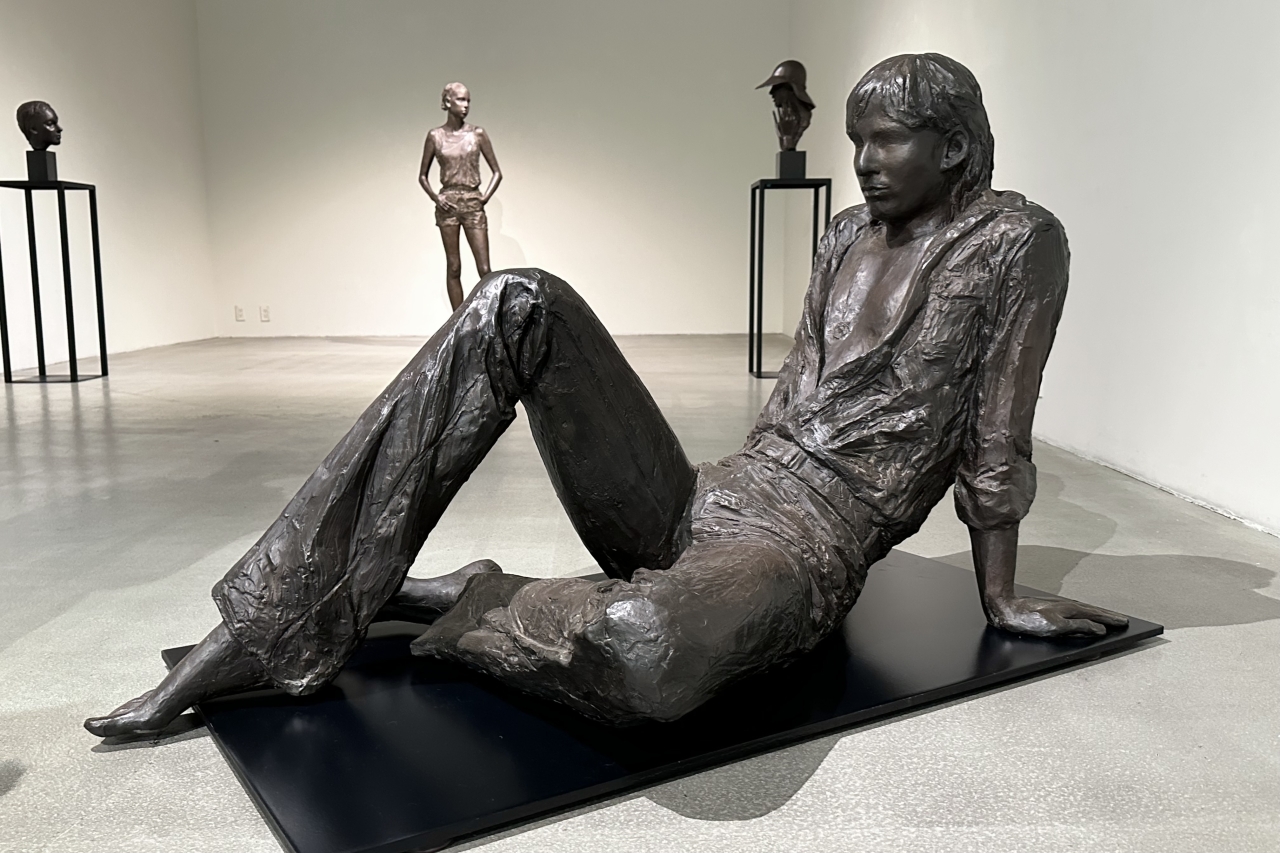
As an aside, Kyoko Asakura's works are scattered throughout public spaces all over Japan, and this one is also installed in Shiroyama Park in Nagano City, Nagano Prefecture. In this idyllic location, where the greenery spreads out, the title "Rest" is perfectly suited to the piece, the figure stretches its toes out from the stone pedestal onto the ground, relaxing and stretching out as if on a picnic, which is likely to give the viewer a sense of mental space.
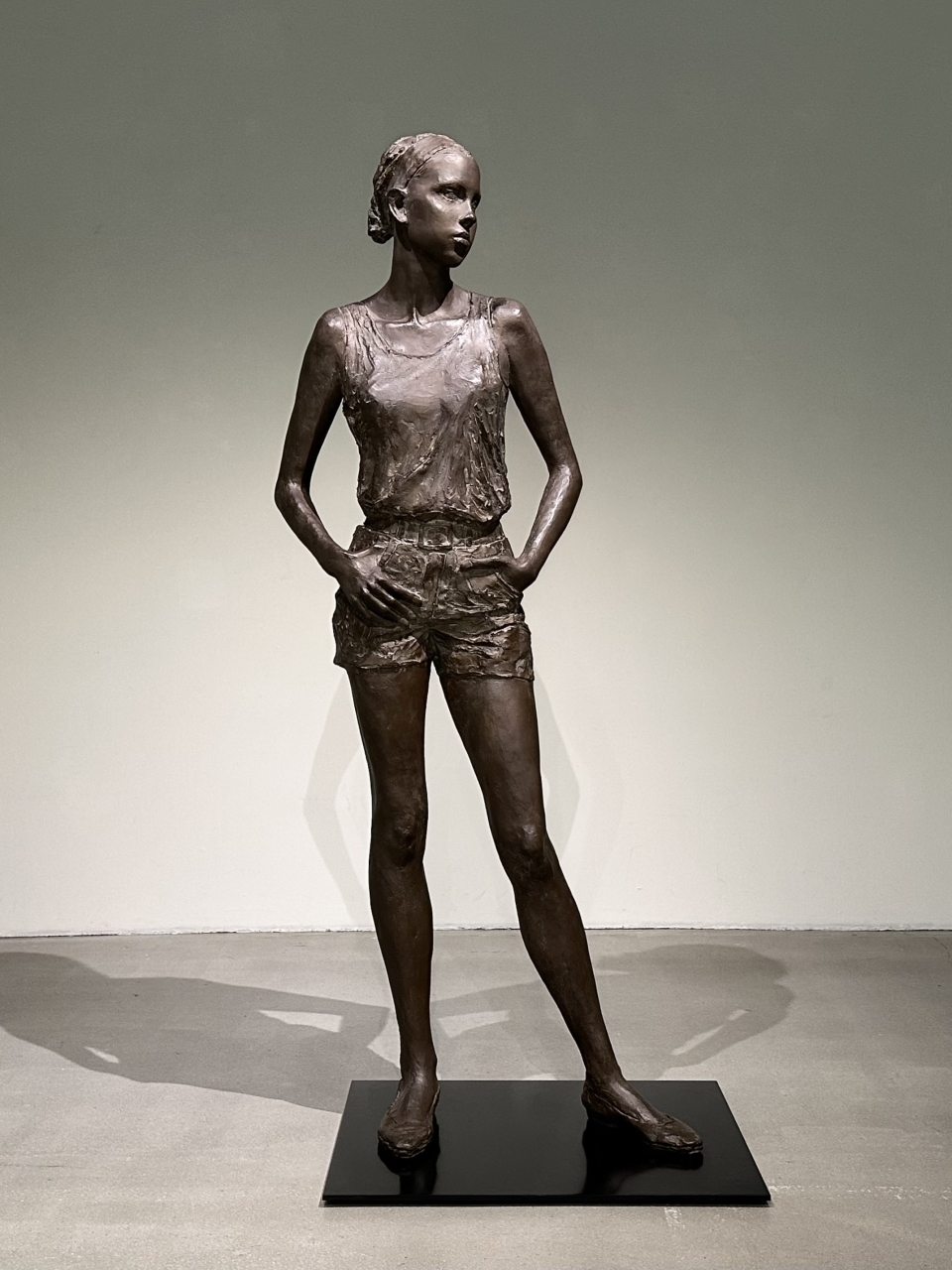
At the very back of the venue, "Lisa," which was also chosen as the main visual for this exhibition, was on display. It is a sculpture that sublimates a woman's natural standing posture, and Tobari says that its distinctive feature is that it is "flawless" from any angle, 360 degrees.
"In many cases, a work of art has a front, or when you stand facing the work, it is the side that the sculptor wants to show. In Kyoko's case, the pose is fixed no matter what angle you look at the work from. Kyoko's works do not have the weaknesses that humans have. This work makes you realize this. I think this work presents one answer to what sculpture means to Kyoko."
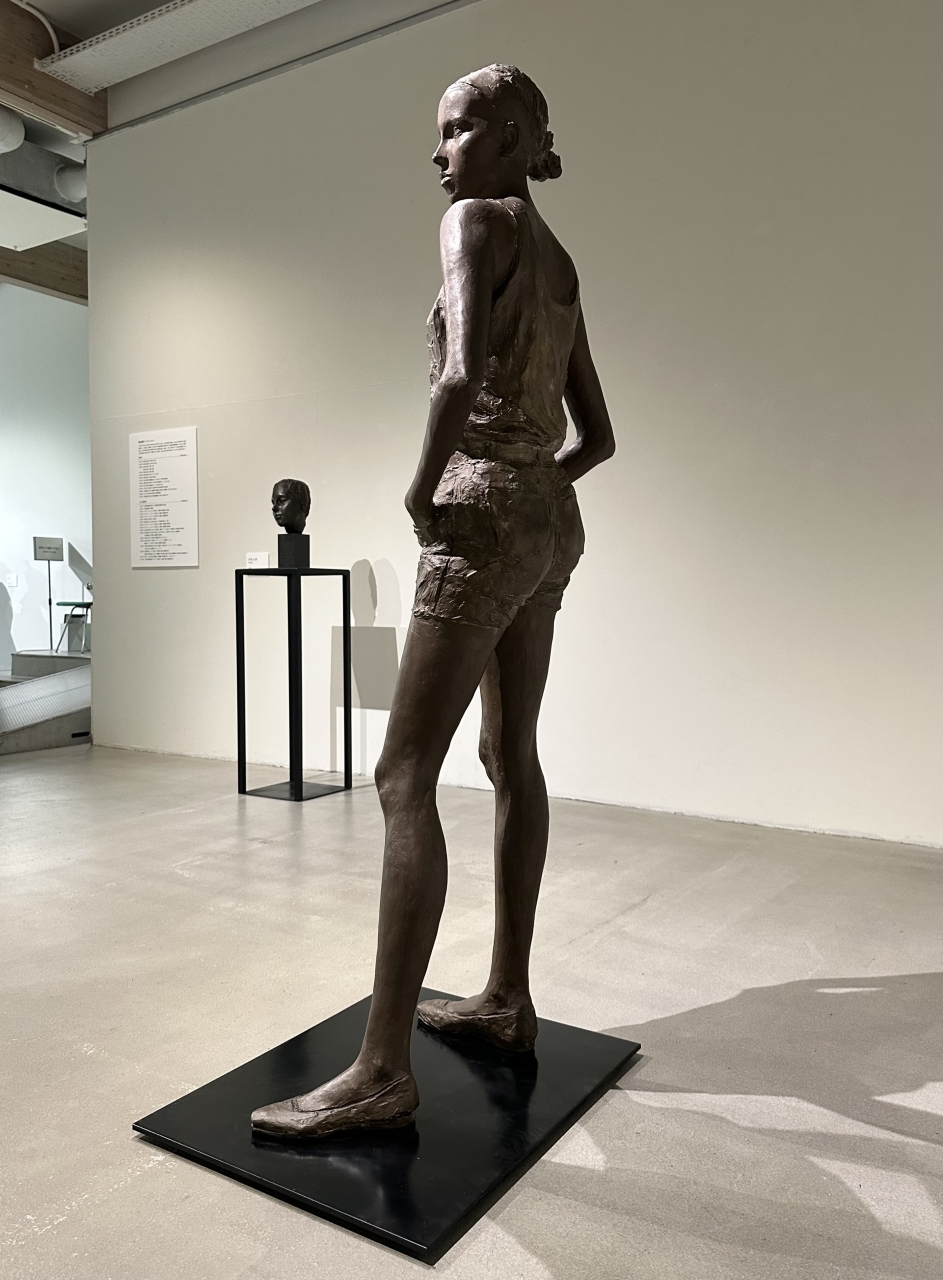
Tobari also asked people to pay attention to the feet of the piece.
Apparently, it takes a great deal of skill to make a sculpture stand on two legs. You often see sculptures where the ground beneath the feet is one with the work. This is called "jiama" and acts as a weight to adjust the center of gravity of the work.
"One sculptor said that it's easier to adjust the balance if you leave some 'room', but this piece doesn't have that. What's amazing about Kyoko-sensei is that she manages to achieve such difficult feats with such ease. This piece was made by creating a plaster mold from a clay prototype, then pouring in bronze to finish it. To make it stand like a human being, and to achieve the shape and balance out of clay, it is essential to study the human body. When you imagine that process, you can see that Kyoko's stylish works are made possible by keen observation and outstanding technical skill."
Looking at the work as a whole, it is surprising that although it has been a while since it was created, the female figures do not feel dated at all. One of the reasons why it has achieved timelessness as a work of art is the fashion, which is simple and makes the most of the beauty of the body. With her fingers in her jeans pockets and a dignified expression, she is not trying to be too cool. The natural and free female figure seems to overlap with the figure of Kyoko Asakura, who struggled away from her father's protection in the still male-dominated art world.
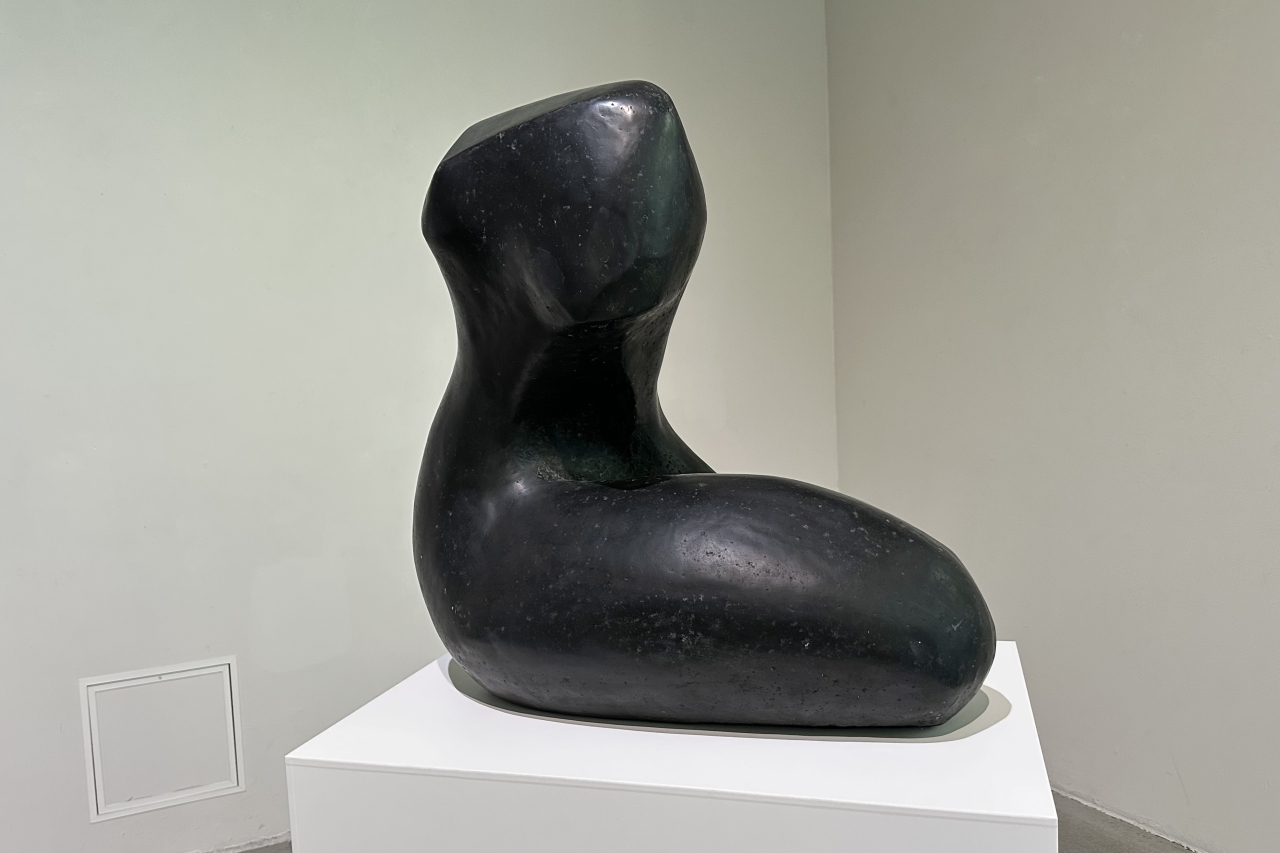
Finally, Tobari offered the following opinion on the appeal of Asakura Kyoko's work:
"Fumio Asakura's works tend to be installed at a high position, so many of them are viewed by looking up. Kyoko's works, in contrast, are often installed at the same height as the viewer. The space and the work become one, creating a sense of ease and closeness, as if we are blending into the work. I think this is a big attraction, and that is why his works are still installed in outdoor public spaces and are familiar to people."
Kyoko Asakura's sculptures are like a kind of refreshing agent, bringing a breath of fresh air to the cityscape. Even if you missed this exhibition, we encourage you to seek out Kyoko Asakura's works, many of which are scattered around Tokyo, and experience their lively atmosphere and universal beauty.
The Asakura Museum of Sculpture is set to hold a special exhibition entitled "ASAKURA Kyoko: 100 Years Since Birth" from Saturday, September 13th to Sunday, December 14th, 2025. This will be the first time that the museum will exhibit a sculptural space created by father and daughter Asakura Fumio and Kyoko. For more details, please see the Asakura Museum of Sculpture's official website .
[Reference] Articles about past exhibitions are available.
Special exhibition commemorating 60 years since the death of Asakura Fumio: "Wonderful Cat Life: Asakura Fumio and Cats, and Sometimes Dogs"
(Duration: Saturday, September 14, 2024 to Tuesday, December 24, 2024)
Overview of the "100th Anniversary of the Birth of Kyoko Asakura Exhibition"
| venue | Ueno Royal Museum Gallery |
| Dates | May 11, 2025 (Sun) – May 21, 2025 (Wed) |
| Opening hours | 10:00-17:00 |
| Admission fee | free |
| Museum official website | https://www.ueno-mori.org/ |
Asakura Museum of Sculpture (7-18-10 Yanaka, Taito-ku)
| Opening hours | 9:30-16:30 (entry until 16:00) |
| Closed Days | Mondays and Thursdays (open on public holidays) |
| Admission fee | Adults: 500 yen / Elementary, middle and high school students: 250 yen |
| TEL | 03-3821-4549 |
| Asakura Museum of Sculpture Website | https://www.taitogeibun.net/asakura/ |
*The content of this article is from the time of the interview.

